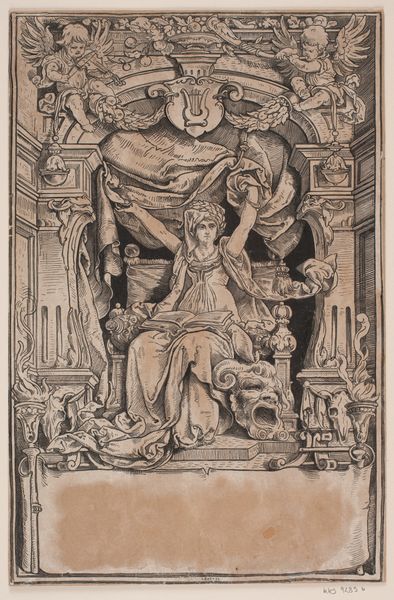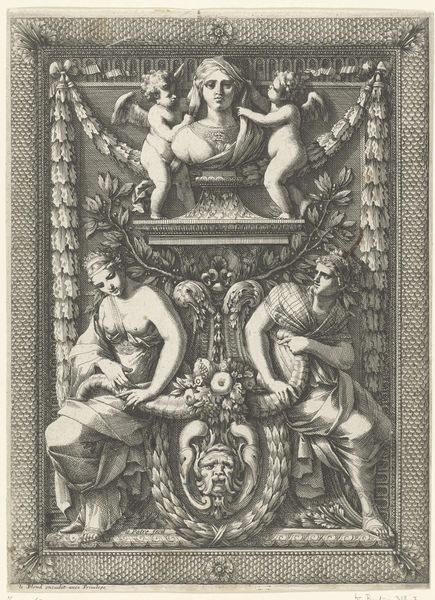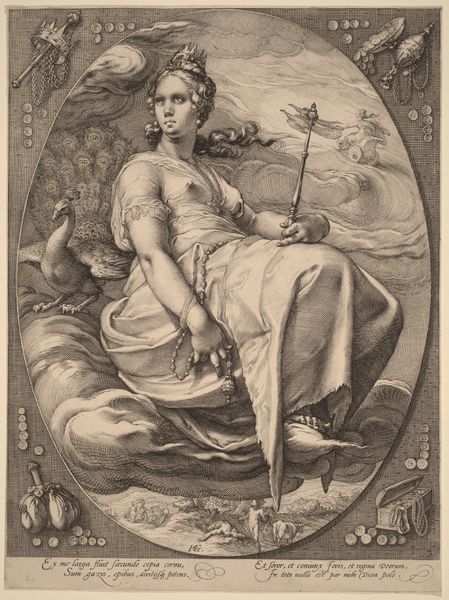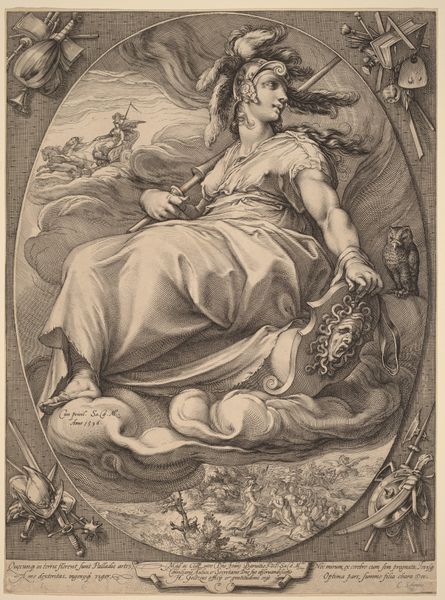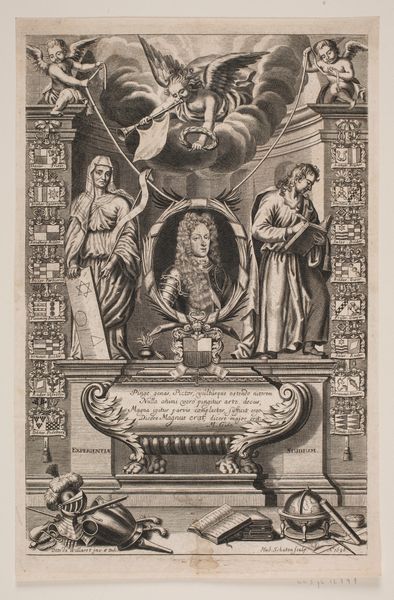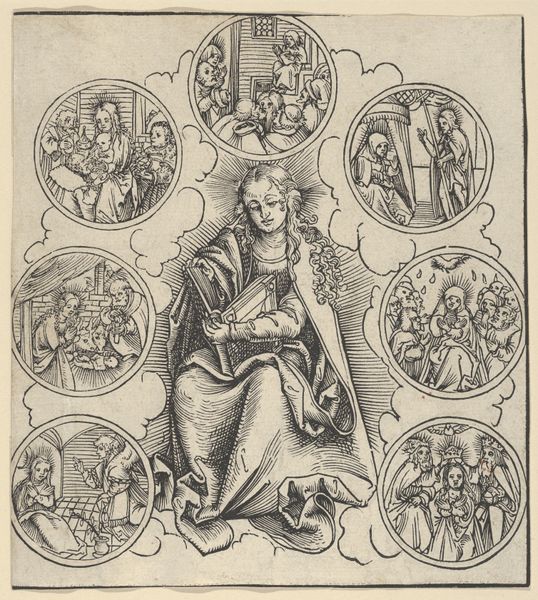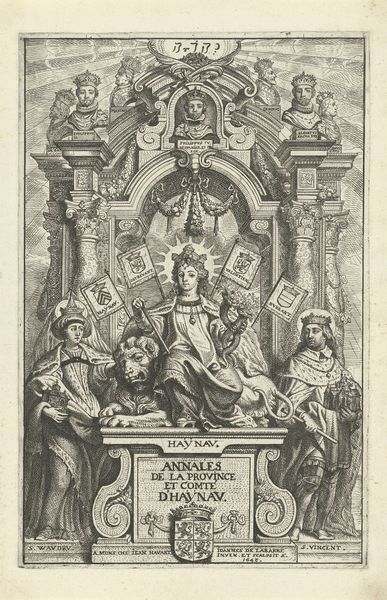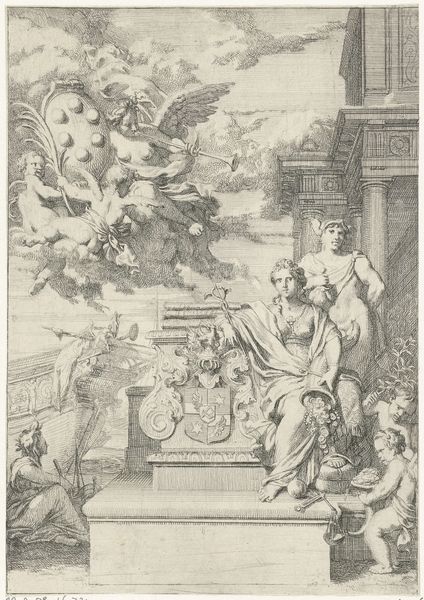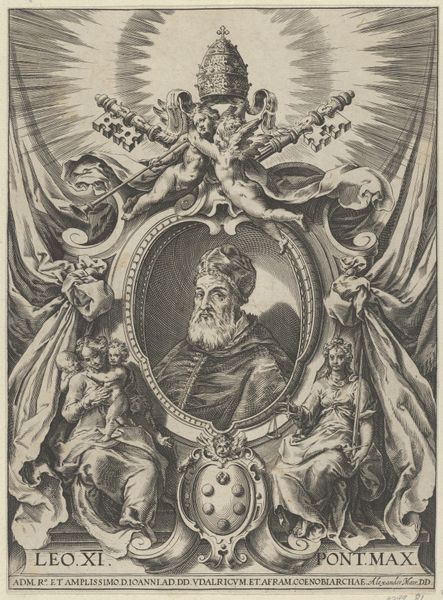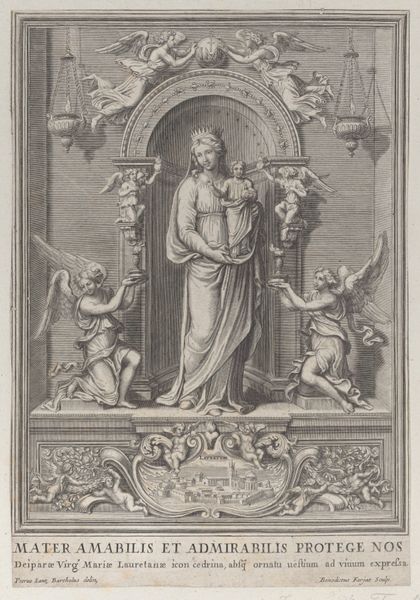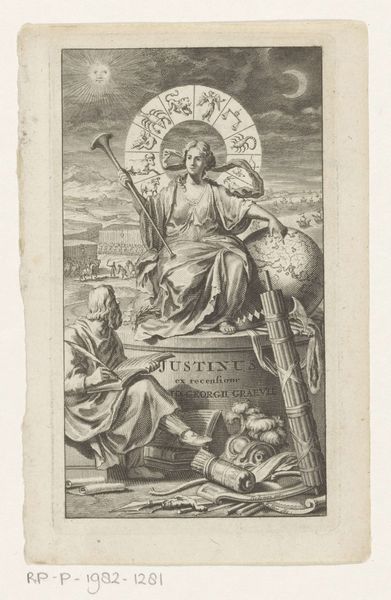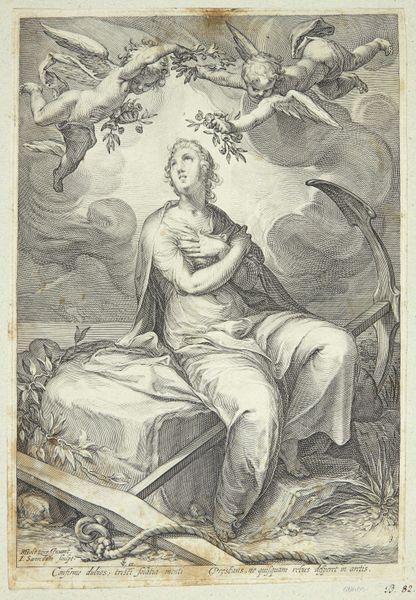
print, engraving
#
portrait
#
allegory
#
baroque
#
pen drawing
#
dutch-golden-age
# print
#
figuration
#
coloured pencil
#
line
#
history-painting
#
engraving
Dimensions: height 375 mm, width 264 mm
Copyright: Rijks Museum: Open Domain
Curator: Welcome. Before us is the title page from the series Pacificatores, created in 1648 by Pieter de Jode II. It's an engraving, currently held at the Rijksmuseum. Editor: My immediate impression is one of controlled grandeur, everything perfectly balanced. The symmetry is almost overpowering. And it’s monochrome of course. It's like a carefully staged tableau frozen in time, all linear patterns and shapes. Curator: The work reflects the Baroque style, characterized by elaborate details and symbolic representation, doesn’t it? In it, the figure embodies peace in the aftermath of conflict, with the putti suggesting innocence amidst turmoil. Editor: Right, those details! But it’s more than detail. It’s the contrast of textures. Look how the fabric drapes create shadow. That sphere and the musical instruments and armaments discarded at the queen’s side—every object offers distinct lines and forms. The artist really understood volume, didn’t he? Curator: Indeed. These are clear indicators of restored harmony following periods of unrest, especially when viewed against the backdrop of the late stages of the Thirty Years' War, which had such a profound impact on societal structures across Europe. What do you make of this "peace"? It’s hardly equitably distributed if we’re examining who benefits from conflict resolution. Editor: I'm focusing more on how meaning is structured visually. The way those swirling forms and diagonals all lead us back to the serene face. Curator: Although, looking at the landscape in the distance, doesn't it prompt us to question who exactly is experiencing this peace? Whose interests were served? And whose stories remain unheard, concealed within the shadows of history. This piece invites questions regarding power, agency, and historical marginalization. Editor: I can see those thematic elements too, but the piece has clear, visual intent through line, contrast and symbolic composition. These are designed to immediately convey a symbolic value. Curator: Perhaps the effectiveness of its message lies in its structural composition. Thanks to the clarity, its complex visual symbolism opens up the avenues to consider its message in its context. Editor: Precisely. Well, I am glad we’ve examined Pieter de Jode's title page, from the textures of form and color, to broader meaning that all begins with how a viewer understands its internal parts.
Comments
No comments
Be the first to comment and join the conversation on the ultimate creative platform.
